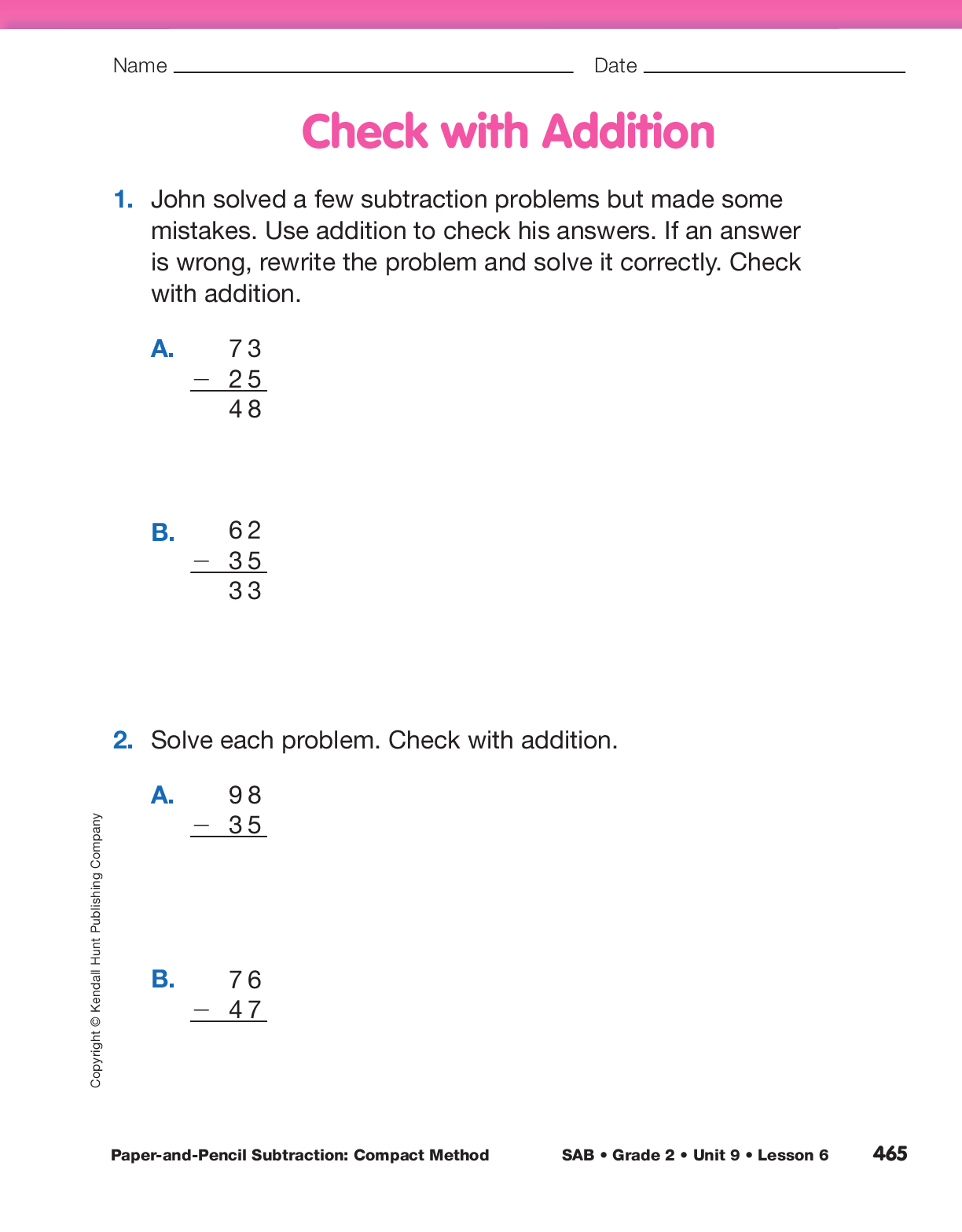Paper-and-Pencil Subtraction: Compact Method
Est. Class Sessions: 2–3Developing the Lesson
Part 2: Checking for Reasonableness
Use Strategies to Check Solutions. It is very important for students to develop the habit of checking their work. However, when they look back over calculations, students often make the same mistakes they made the first time. For this reason, it is helpful to check by doing the problem another way. See the Sample Dialog for common mistakes students might make when using the compact method.
Encourage students to check their answer by using strategies such as the following:
- use the expanded form
- use base-ten pieces
- use friendly numbers by rounding to nearest tens
- use a number line to make jumps of tens and ones
- use a 200 Chart
- think of money
- mentally subtract first the tens and then the ones from the beginning number (e.g., 71 − 10 = 61 and 61 − 3 = 58)
- check by using addition
Begin by writing a subtraction problem with an incorrect answer on a display as shown in Figure 6.
Ask:
Checking with Addition. Students might suggest several different ways to redo the subtraction problem. But they might need prompting to come up with a way to check subtraction by using addition.
Explain:
Demonstrate by writing the answer 62 and adding 13.
Ask:
Give students a few subtraction problems as in Figures 7 and 8. Ask students to check the answers. After checking with addition, students should see that the subtraction is correct in Figure 7. Adding 26 back to the answer (19) gives what you started with (45). After checking with addition, students should see that there is a mistake in Figure 8. Adding 37 back to the answer (33) does not give you what you started with (64). Discuss the possibility that either the subtraction is incorrect or the addition is incorrect, but there is a mistake somewhere.
Ask students to solve the problems on the Check with Addition page in the Student Activity Book. In Question 1A and Question 1B students use addition to check someone else’s work. In Question 2A and Question 2B, they subtract and then use addition to check their own work.


















